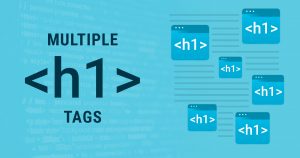What is Multitag? The Power of Multi-Category Tagging for Better Organization
What is Multitag? The Power of Multi-Category Tagging for Better Organization
Blog Article
In today’s digital landscape, managing and categorizing vast amounts of data efficiently is essential for businesses, content creators, and developers. One emerging treatment for streamline organization and retrieval is multitagging—a flexible and powerful tagging system which allows items to fit in with multiple categories simultaneously.
Understanding Multitag
Multitag (or multi-tagging) is a metadata system when a single little bit of content, product, or data entry may be assigned multiple tags or categories at the same time. Unlike traditional single-category classification, multitagging enables more dynamic and precise organization, improving searchability, personalization, and automation.
Key Characteristics of Multitagging:
Multiple Assignments – A file, product, or post can have several tags (e.g., your blog post post tagged as #Marketing, #SEO, and #ContentStrategy).
Hierarchical & Non-Hierarchical – Tags may be structured in layers or remain flat.
Dynamic Filtering – Users can combine tags to refine searches (e.g., filter by #Vegan + #Dessert inside a recipe app).
Cross-Referencing – Helps in discovering related content across different categories.
Why Multitagging Matters
Better Organization – Breaks free from rigid folder structures, allowing flexible categorization.
Enhanced Search & Discovery – Users will get content using multiple keyword combinations.
Personalization – Enables AI and recommendation engines to suggest relevant content depending on overlapping tags.
Efficient Automation – Helps in sorting, filtering, and processing data in workflows (e.g., e-commerce product tagging).
Use Cases of Multitagging
1. E-Commerce
A single product (e.g., a "wireless gaming mouse") could be tagged with:
#Electronics
#GamingAccessories
#WirelessDevices
#BestSellers
2. Content Management (Blogs, Media Libraries)
A YouTube video about "Budget Travel in Europe" could have tags like:
#Travel
#Europe
#BudgetTips
#Backpacking
3. Project Management & Task Tracking
A task like "Design New Logo" may be tagged:
#Design
#Branding
#Urgent
#MarketingTeam
4. Digital Asset Management (DAM)
A stock photo could possibly be tagged with:
#Nature
#Mountain
#Sunset
#LandscapePhotography
Multitag vs. Traditional Tagging
Feature Traditional Tagging Multitagging
Flexibility Limited to 1 category per item Supports multiple tags
Searchability Basic filtering Advanced cross-tag filtering
Scalability Struggles with complex data Handles large datasets efficiently
Dynamic Use Static categorization Adaptable to changing needs
Challenges of Multitagging
Tag Overload – Too many tags can create confusion without the right management.
Inconsistent Tagging – Requires clear guidelines to prevent duplicates (e.g., #SEO vs. #SearchEngineOptimization).
Performance Issues – Large-scale multitag databases need optimized indexing for fast queries.
Best Practices for Effective Multitagging
Use Clear, Consistent Naming Conventions (e.g., singular vs. plural: #Book vs. #Books).
Limit Over-Tagging – Focus on the most recent tags to prevent noise.
Implement Hierarchical Tags – Broad categories (#Fitness) with sub-tags (#Yoga, #Weightlifting).
Leverage AI & Auto-Tagging – Tools like NLP can automate tagging for efficiency.
Multitagging is revolutionizing how we organize and retrieve digital content, products, and data. By allowing multiple tags per item, it enhances searchability, personalization, and workflow automation—making it invaluable for e-commerce, content platforms, and enterprise systems.